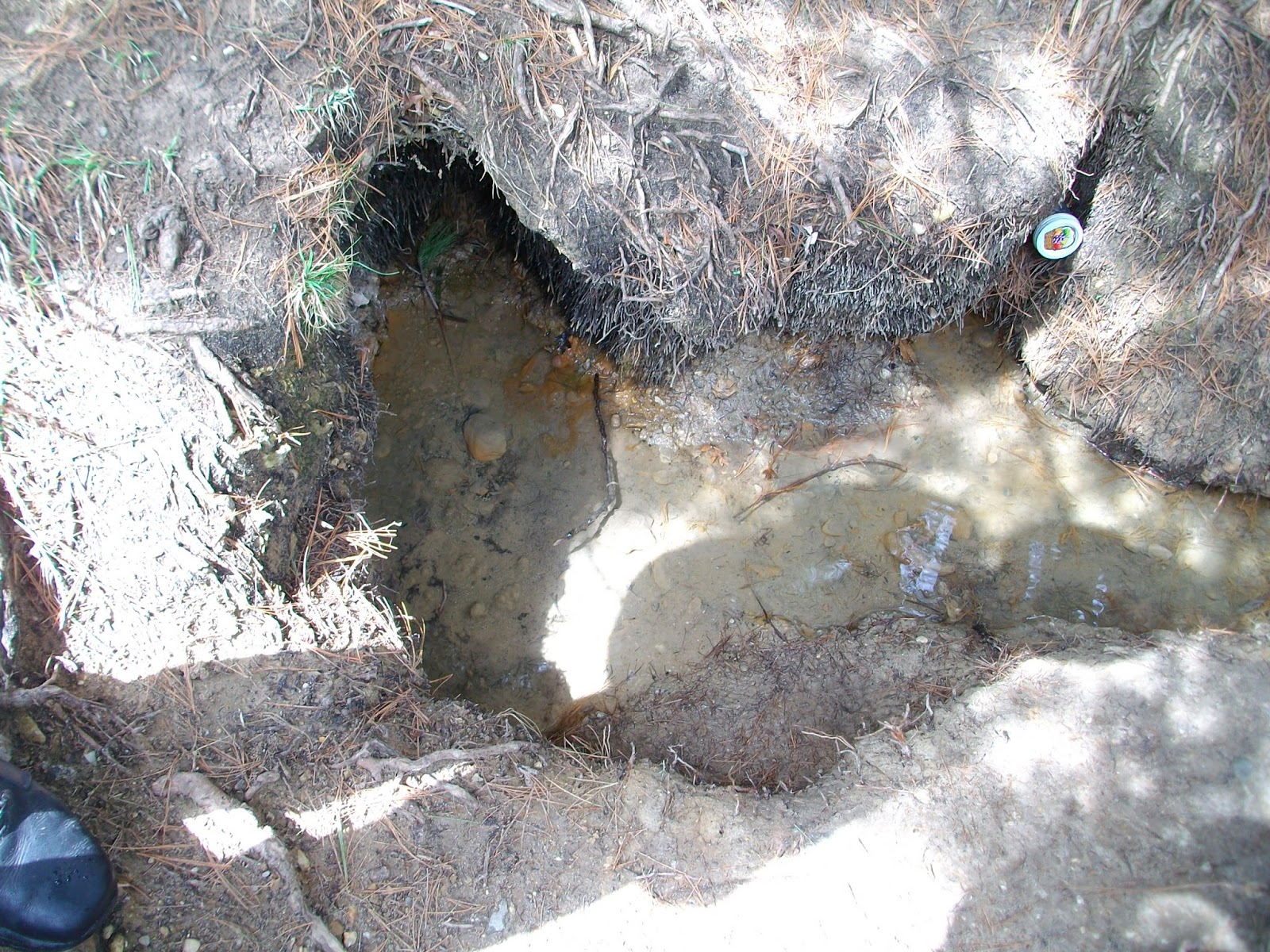Earlier this month Bob and I cashed in on his Birthday gift, from me, and participated in a class called Wild Foods through our local Human Nature School. I don't know if there exist more chapters than the one we have here, I just assume there are others like it out there, if not going by the exact same name. Our class was to be a four hour hike around some wooded parts of Northern Michigan spent searching for, learning about, and tasting the wild foods in our own backyard.
We thought maybe we'd get a nature hobbyist as a leader but we could not have been more wrong. Our guide, Matt, had spent weeks in the wild foraging for all of his meals, creating shelter from nature, and surviving off the land. What a thought, huh? He was truly an expert. His co-guide, Rick, was the older + wiser version, too. It was raining when we woke up. I would consider us under-prepared for enduring such weather conditions. That being said I did the best I could putting together a rain-proof outfit for the morning that consisted of plastic bags in the shoes, last years 5K running pants, the shoes I forgot to throw away, and Bob's winter coat's outer shell. I was the only person with exposed calves and it. was. cold. Luckily we did the early "learning" portion inside a heated classroom, instead of outdoors as was the original plan.
We learned a few really important pointers that day.
1. Never eat a wild mushroom unless you're 100% sure of the variety, or accompanied by a mycologist (mushroom expert). Good advice for Bob + me who just last year got excited about the growth on the side of a tree in our favorite park + planned without a doubt to go back for it this fall. Big no no.
2. Queen Anne's Lace, also known as wild carrots, can easily be confused with hemlock - which is poisonous. Bottom line for this one: if it smells like a carrot, it probably is, but eat with caution.
3. Needles from a white pine tree make a great tea that packs more vitamin C than a glass of OJ. Vitamin C is, however, extremely acidic (being aptly named ascorbic acid, and may cause mouth sores) (as Bob may or may not have learned first-hand).
Bob and a wild parsnip ^
 |
| artisan spring, I didn't know they "sprung" around here! ^ |
 |
| Digging up Cattail roots (above) and snacking on Trout Lily bulbs and Ramp leaves (below) |
Other items we ate from the Earth: wild parsnips, Jerusalem artichoke, ramps, basswood tree buds, rose hips, violets, wintercress, wood nettle + others I'm sure I forgot. Ramps were my favorite hands-down, and left the most pungent after taste. Since taking the class Bob has implemented a regular pine needle tea into his almost daily grind. He also brewed up a batch of homemade dandelion jam, and is considering roasting the roots to make dandelion coffee, too. Stay tuned for those adventures. I'd love to know what wild goods grow near you, and what you're curious to try in your own "back yard." Happy Foraging!







this sounds incredible. i'd love to take a class like this sometime!
ReplyDelete